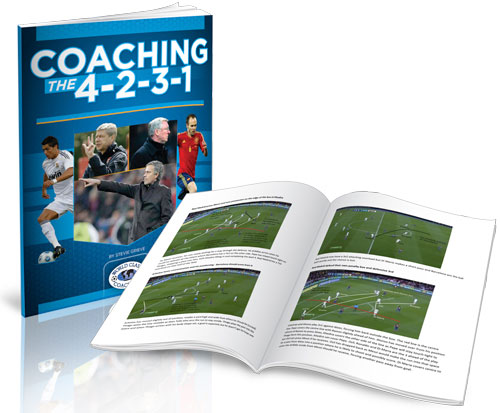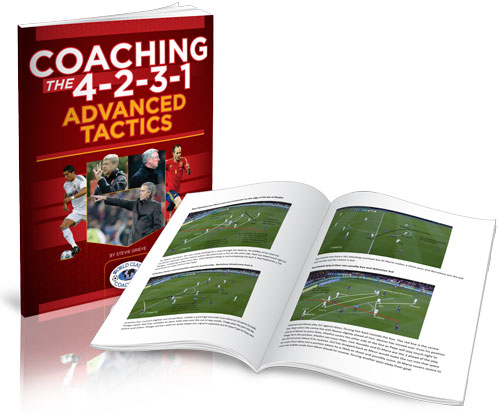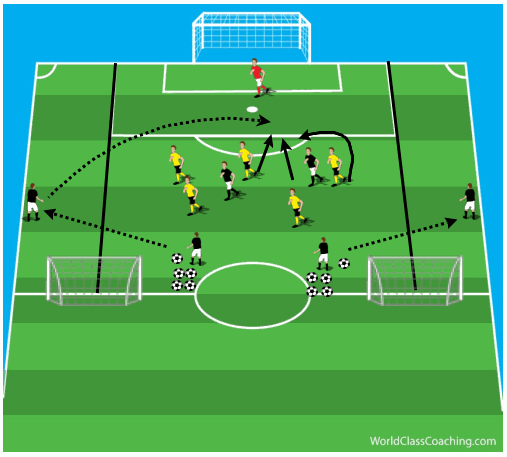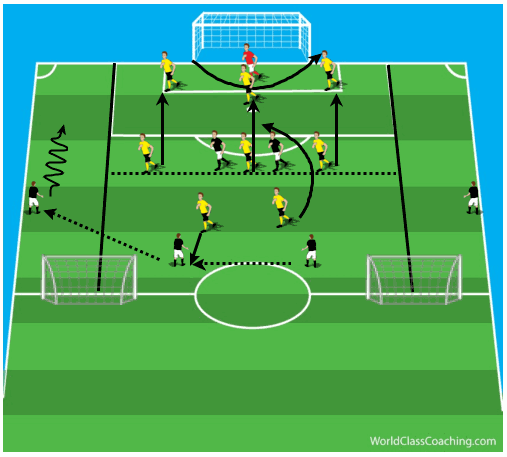The 4-2-3-1 formation has become the system of choice for many of the worlds top professional and national teams like Real Madrid, Manchester United and Brazil. As coaches at every level have watched these top teams play they have looked for ways to implement the system with their college, high school and youth teams.
The first step in introducing a new way of playing s to break the system down and identify the most important components. The was done very well by Stevie Grieve in the very popular book, 'Coaching the 4-2-3-1' as well as by Wayne Harrison through his 'Coaching the 4-2-3-1 Video Series'. These videos and book provide a great start to any coach looking to train their team use the 4-2-3-1.
But there's a lot more to the system than can be explained in one book and set of videos. One of the strengths of the system is it's flexibility in both attack and defense. The top teams and managers can show us the variations that will take or of understanding of the system's potential to the next level.
Stevie Grieve's latest book, 'Coaching the 4-2-3-1 Advanced Tactics' shows how teams playing at the highest level make the system fit their personnel and playing style. It's those adjustments that are the difference between just using the system and truly understanding it.
Throughout the book Grieve shows screen shots taken from actual games to illustrate the subtle adjustments each team makes. He also gives you detailed descriptions of actual training session that you can use to get the same results with your team.
Here is an example of a session that focuses on Defensive Cohesion.
Controlling the line depth in the back four and covering defensive zones
Make a central defensive grid the width of the penalty box up to the halfway line, and play 6v5. The activity starts with 3 central defenders playing 3v2 against 2 strikers. The midfielder will pass wide to the winger who will receive and deliver a long pass into the center.
Coaching Points:
- The defense must set their defensive line at the distance they believe is in accordance to the threat by their opponents
- The defenders should move as a unit, and move together or further apart depending on the positions of the strikers, but keep the distance to a maximum of 10 yards apart between players
- The far side defender should anticipate the cross to allow moving up to play offside or dropping back to cover the cross to be a group decision
- The defensive midfield should block passing lanes from midfield and be aware of the distance between the lines, reducing the space to between 10-15 yards at most.
Covering Zones inside the box when defending a cross
This time, the winger is in possession and can run forward with the ball. Once ahead of the line of the penalty box, he can deliver a cross. The defense must retreat keeping the correct line depth as the winger moves forward, and the midfield 2 should move with the play.
Coaching Points:
- The full back closest to the ball should cover the space at the front post 3-6 yards out
- The center back should cover the center of the box, 6-9 yards out
- The far side defender should be in line with the front post player, at the far post
- The central midfielder who doesn’t press the ball should drop deep to cover the middle of the goal 15-18 yards out
- The central midfielder who pressed the ball should drop back as the winger dribbles to around 22-25 yards, where he can win the loose ball from the clearance and be positioned to counter attack
Progressions/Variations:
- The full back presses the ball
- The central defender makes the decision for the full back to press based on the line depth – if the center back is unable to see the ball, the full back should press the winger, but if the winger crosses the center back’s line of vision early, the full back will be told to tuck inside and help the center back as he has crossed the line depth to allow good pressure on the ball to stop the cross
- Add in a full back 4 with 2 holding midfielders against 3 attackers, 3 central midfielders and 2 wingers for an attacking overload of 6v8 where the defense need to be decisive and well-positioned inside the box when the cross is delivered
Add in a midfield 2-1 triangle and add full backs to the attack for 7v10 on the counter attack, when the ball is won score into one of the 3 target goals 10 yards over the half way line.
You can visit www.CoachingSoccerTactics.com for much more information about the 4-2-3-1 and other systems of play including the 4-3-3 and 4-4-2.
Have a great day!
Tom







